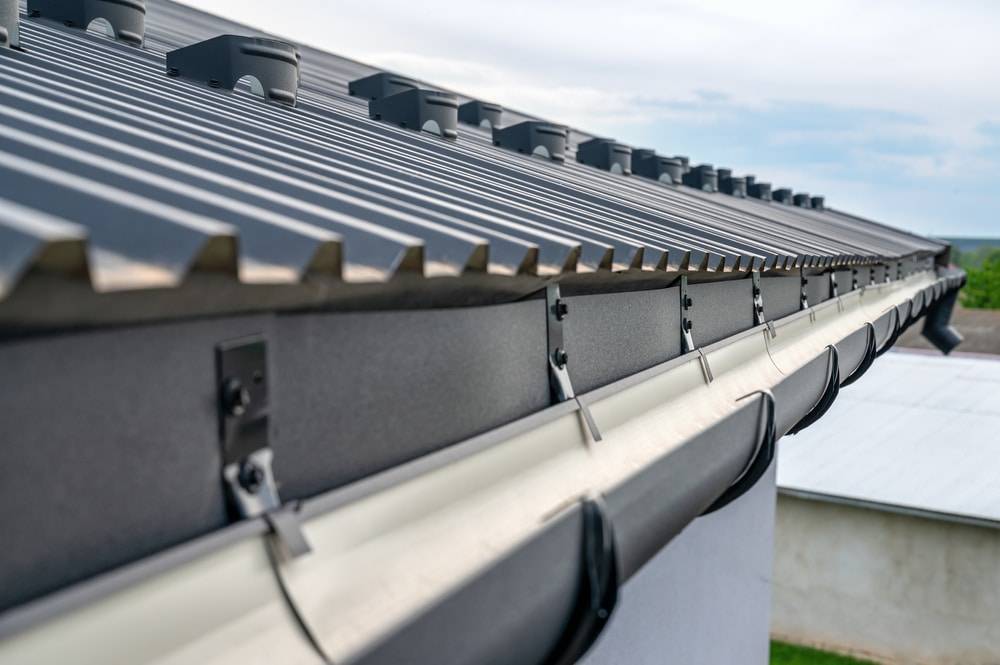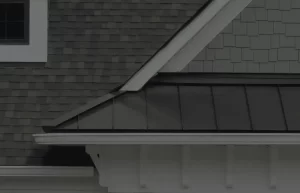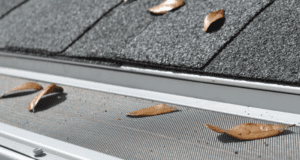Gutters play a pivotal yet often underestimated role in managing water runoff from rooftops and safeguarding foundations. Properly installed gutters mitigate the risks of water intrusion, damage, and foundation decay. Despite their seemingly straightforward nature, installing a gutter system entails a range of components and tools for optimal functionality. This post delves into the essential parts, accessories, and tools required for a successful gutter installation. Explore the key elements necessary for the job ahead.
Types of Gutter Systems
When it comes to gutters, there’s no one-size-fits-all solution. Just like roof shingles and windows, gutters vary in materials and designs to suit different preferences and needs.
Let’s delve into the various types of gutters available:
-
Seamless Aluminum Gutters (Most Popular):
Seamless aluminum gutters reign supreme as the top choice among both homeowners and installers. Crafted in one seamless piece on-site, these gutters offer a tailored fit for every section of your home.
They commonly come in sizes of 5″ or 6″ and boast several advantages:
- Aesthetic appeal with a wide range of color options (over 30 colors available).
- High durability, provided they are regularly maintained.
- Enhanced performance due to the absence of potential leak points found in sectional gutters.
- Cost efficiency compared to other materials. Seamless gutter materials may include:
- Aluminum (most popular and cost-effective)
- Copper
- Galvanized steel
- Stainless steel
-
Sectional Vinyl Gutters (Least Popular):
Sectional gutters, as the name suggests, come in separate sections and are typically made of vinyl. While they are the cheapest option, they also offer the lowest quality and are rarely recommended for permanent installation. They are commonly found in hardware stores for DIY projects but tend to cause more issues and expenses in the long run.
-
Metal, Copper, and Steel Gutters (Most Expensive & Elegant):
For homeowners seeking luxury and durability, metal, copper, and steel gutters stand out as premium choices. These materials exude elegance and strength, but they come with a hefty price tag. While they enhance curb appeal, many homeowners find that aluminum gutters offer a more budget-friendly option without compromising on aesthetics in most cases.
By understanding the different types of gutters available, homeowners can make informed decisions based on their preferences, budget, and long-term maintenance considerations. Whether opting for the affordability of aluminum or the luxury of metal, the right choice can enhance both the functionality and appearance of your home’s exterior.
Essential Components of a Gutter Installation : Gutter Parts and Accessories
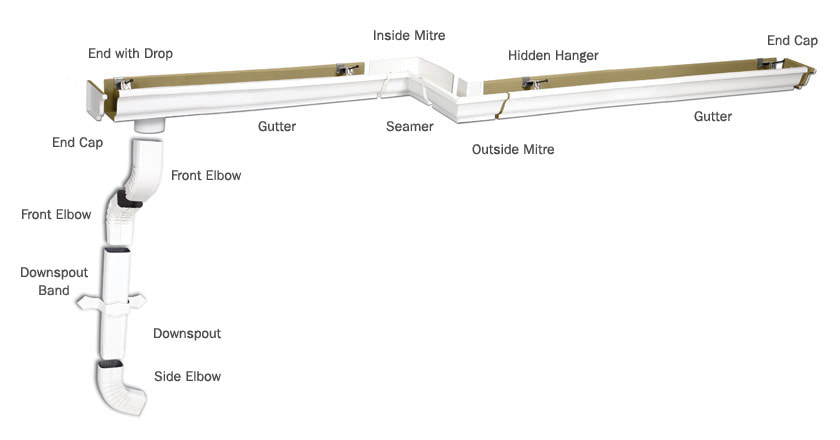
When considering a gutter installation, it’s vital to understand the various parts and accessories involved beyond just the gutters and downspouts.
Here, we delve into the key components necessary for a seamless gutter system:
-
Gutters:
These horizontal components line the roof’s edge, channeling rainwater and snowmelt away from your property. It’s crucial to install them with a slight slope towards the downspouts, typically at a quarter-inch per 10 feet. Gutters are available in sizes ranging from 4 to 7 inches to suit different needs.
-
Downspouts:
Positioned vertically, downspouts are tasked with directing water from the gutters safely away from the foundation. Poorly installed downspouts can result in water pooling near the base of your home, leading to erosion and potential damage. Ensure downspouts discharge water 4 to 6 feet away from the foundation.
-
Elbow Joints:
These angled fittings facilitate smooth transitions around corners, enabling the gutter system to navigate the bends of your home effectively. Proper sealing at end joints is essential to prevent frequent debris clogs.
-
End Caps:
Installed at the open ends of gutters, end caps prevent water from flowing out and pooling around your property. They are integral to maintaining the efficiency of your gutter system.
-
Fascia Boards:
Serving as the mounting surface for gutters, fascia boards are typically located under the roofline. While new gutter installations can often be done over existing fascia boards, damaged ones may require replacement for both functional and aesthetic reasons.
-
Gutter Hangers:
These crucial components secure the gutters to your roof or fascia board, ensuring stability, especially during heavy storms. Installing gutter hangers approximately every 36 inches is recommended for optimal support.
-
Gutter Guards:
For added convenience and efficiency, consider installing gutter guards. These accessories fit over the gutters, preventing debris such as leaves and twigs from clogging the system while allowing water to flow freely. Ideal for areas with dense foliage or homeowners seeking to minimize gutter maintenance tasks.
By understanding and incorporating these essential parts and accessories into your gutter installation, you can effectively safeguard your property against water damage while maintaining optimal functionality and longevity of your gutter system.
Essential Tools and Accessories for Gutter Installation
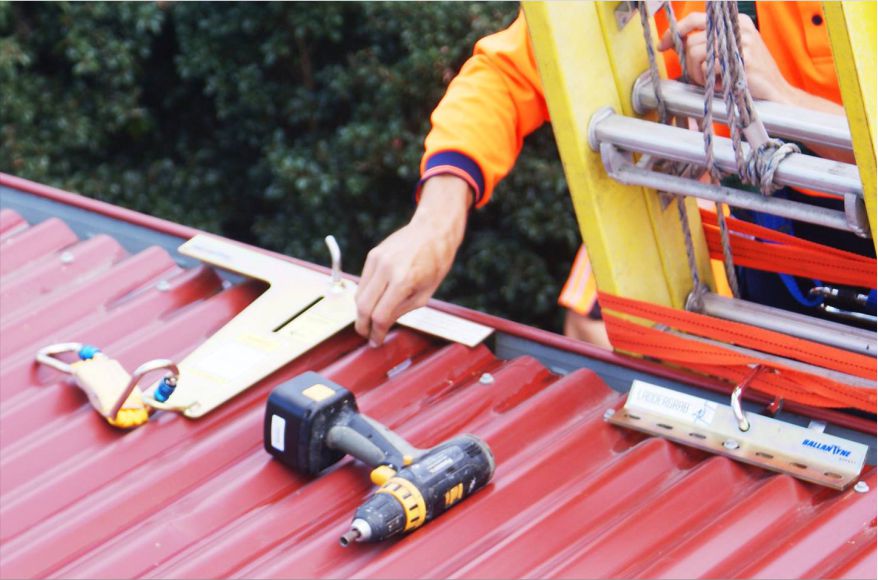
In addition to the primary components, several tools and accessories are indispensable for a successful gutter installation. Let’s explore the essential gear you’ll need in your toolbox:
-
Tin Snips:
These handy tools are crucial for cutting gutters to the required size, ensuring a precise fit along the home’s roofline.
-
Ladder:
Accessing the roofline safely is paramount during gutter installation. A sturdy ladder is essential, even for single-story homes, to facilitate proper installation of gutter components.
-
Rivet Gun and Rivets:
These tools are used to securely fasten various gutter components such as gutters, end caps, elbows, and downspouts, forming the cohesive gutter system for your home.
-
Caulk:
To prevent unwanted leaks in the gutter system, it’s advisable to seal gutter seams with caulk, ensuring durability and water-tightness.
-
Other Tools and Parts:
A cordless drill, hex head driver, measuring tape, and gutter fascia are also invaluable additions to your toolkit, aiding in the efficient and precise installation process.
Contact Clean Gutter Protection Today
For comprehensive information on gutter installation and the significance of gutter guards, don’t hesitate to reach out to Clean Gutter Protection today. We’re here to provide expert guidance and support for all your gutter installation needs.

Frequently Asked Questions (FAQ) About Gutter Parts, Accessories, and Installation:
Q: What are the essential parts and accessories needed for a gutter installation?
Key components for a gutter installation include gutters, downspouts, elbow joints, end caps, fascia boards, gutter hangers, and gutter guards. These accessories work together to ensure proper water drainage and protection for your home.
Q: What types of gutters are available for installation?
There are several types of gutters to choose from, including seamless aluminum gutters, sectional vinyl gutters, and metal, copper, or steel gutters. Each type offers different levels of durability, aesthetics, and price points.
Q: How are seamless gutters different from sectional gutters?
Seamless gutters are custom-made on-site to fit each area of your home, providing a continuous trough without seams. In contrast, sectional gutters come in separate pieces and are typically made of vinyl. Seamless gutters offer better performance and aesthetics compared to sectional gutters.
Q: What are gutter guards, and do I need them for my gutter system?
Gutter guards are accessories that fit over the gutters to prevent debris such as leaves and twigs from clogging the system while allowing water to flow through. Whether you need gutter guards depends on factors such as the surrounding foliage and your preference for minimizing gutter maintenance tasks.
Q: Can I install gutters myself, or should I hire a professional?
While some homeowners may opt for DIY gutter installations, it’s often advisable to hire a professional installer for a seamless and reliable gutter system. Professionals have the expertise, tools, and experience to ensure proper installation and minimize potential issues.
Q: How do I maintain my gutter system to ensure optimal performance?
Regular gutter maintenance is essential to prevent clogs and water damage. This includes cleaning debris from gutters and downspouts, inspecting for leaks or damage, and ensuring proper alignment and drainage away from the foundation.
Q: What factors should I consider when choosing gutters for my home?
When selecting gutters, consider factors such as your budget, climate conditions, architectural style of your home, and maintenance preferences. Consult with a gutter installation expert to determine the best options for your specific needs.
Q: How long does a gutter installation typically take?
The duration of a gutter installation can vary depending on factors such as the size of your home, the complexity of the gutter system, and weather conditions. On average, a professional installation may take one to two days to complete.
Q: What warranty coverage is available for gutter installations?
Warranty coverage for gutter installations can vary depending on the installer and the type of materials used. Be sure to inquire about warranty options and coverage details when selecting a gutter installation provider.
Q: How can I schedule a gutter installation or request more information?
To schedule a gutter installation or learn more about gutter parts, accessories, and installation guides, contact our team today. We’re here to assist you with all your gutter needs and provide expert guidance for protecting your home against water damage.

